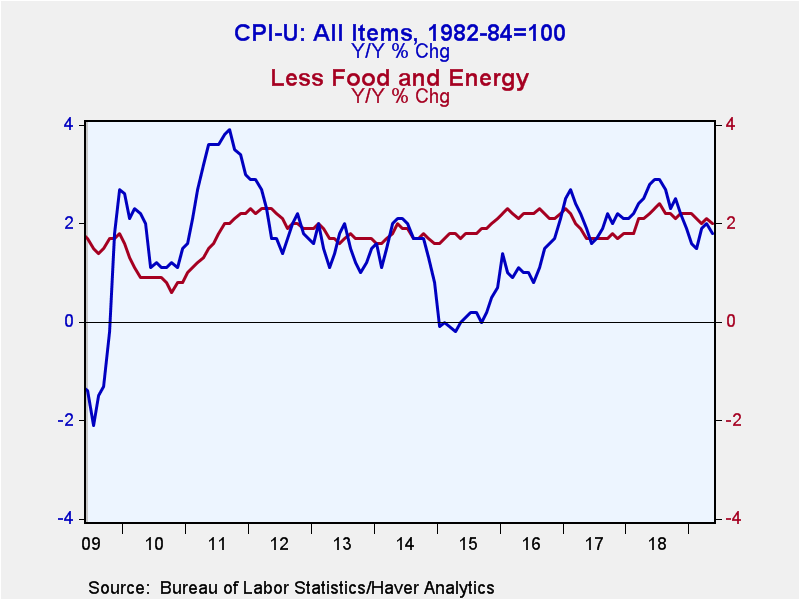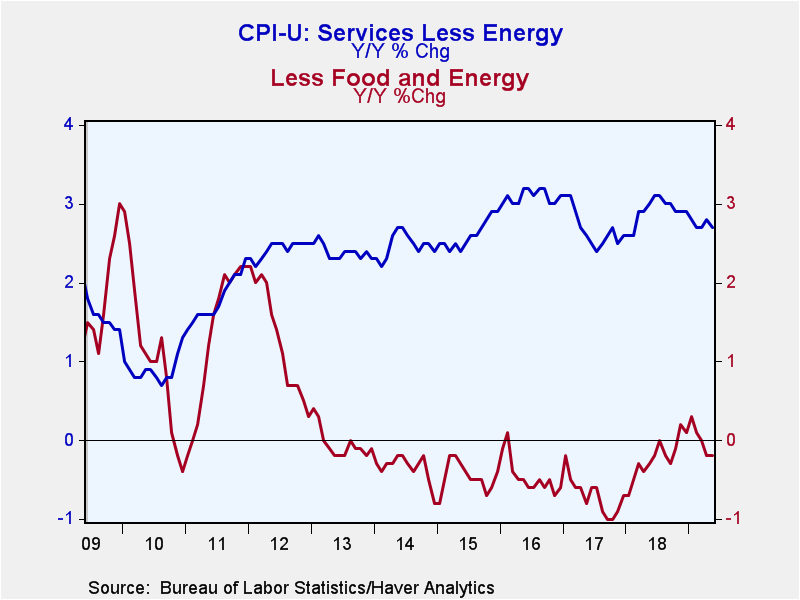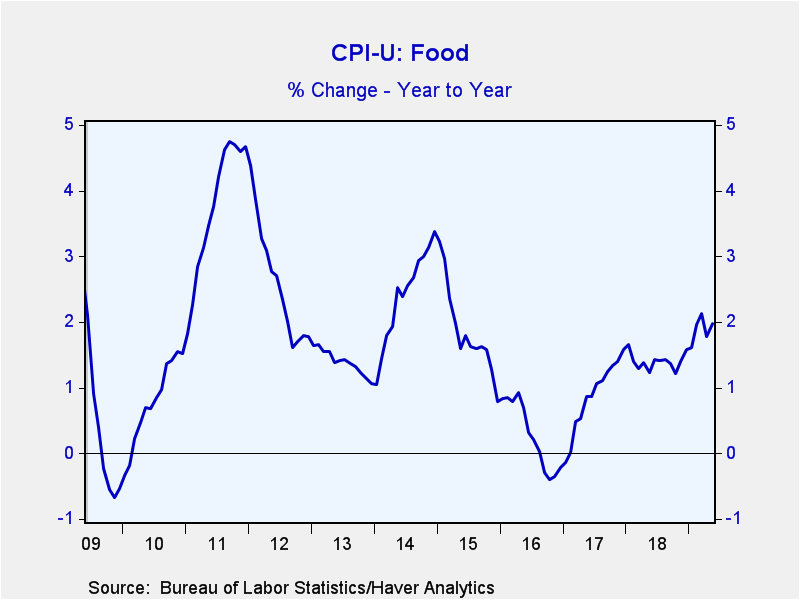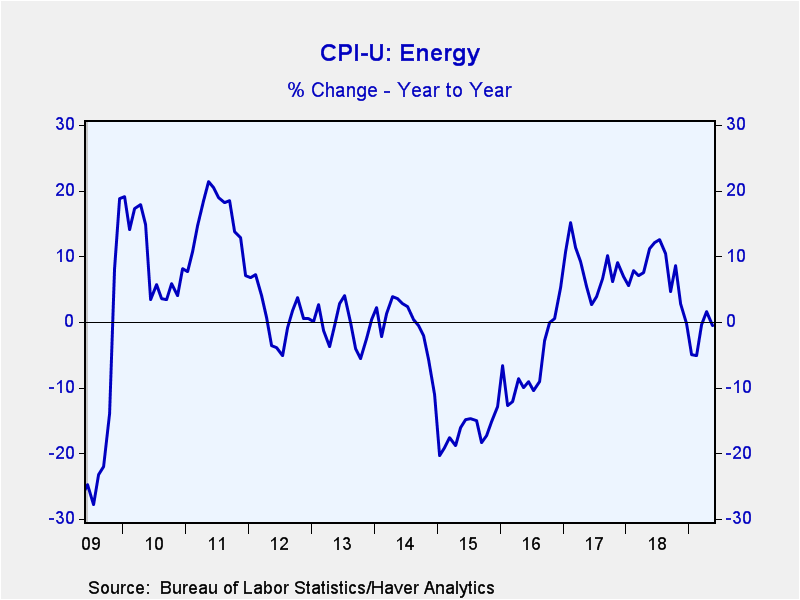 Global| Jun 12 2019
Global| Jun 12 2019U.S. Small Business Optimism Strengthens Significantly
by:Tom Moeller
|in:Economy in Brief
Summary
The National Federation of Independent Business (NFIB) reported that its Small Business Optimism Index increased to 105.0 during May, up for the fourth straight month. It was the highest reading since October. The index gained 1.4% [...]
The National Federation of Independent Business (NFIB) reported that its Small Business Optimism Index increased to 105.0 during May, up for the fourth straight month. It was the highest reading since October. The index gained 1.4% m/m, but was down 2.6% y/y.
A sharply higher 30% of firms thought that now was a good time to expand the business, up from a 20% low in January. The percentage expecting higher real sales rose to 23%, its highest percentage since December. An improved 16% of respondents expected the economy to improve, but that remained down from a high of 48% in January 2017. A strengthened 30% of firms expected to make capital outlays, above the December low of 25%, but below the high of 33% last August.
Expected pricing power continued to deteriorate last month as a lessened 20% of firms were planning to raise prices. It continued to slip below November's ten-year high of 29%. Current pricing pressure also fell. A net 10% of firms were raising average selling prices, still below the 19% high last May.
Labor market readings showed modest m/m improvement. The 21% of respondents planning to increase employment was the most this year. Nevertheless, that remained below the record 26% in August. The 54% of firms that were finding few or no qualified candidates for job openings rose m/m to the highest since December.
Pressure to raise worker compensation stabilized m/m as a steady 34% of firms were raising worker pay. It equaled the highest percentage in January. The percentage of firms that were planning to raise compensation surged m/m to 24% m/m, up from 18% three months earlier.
Credit remained easy to get. Only four percent of firms reported trouble obtaining financing, roughly equaling the percentage of the last four years.
The small business survey inquires about additional issues facing small business. A sharply increased 25% reported problems with the quality of labor. That equaled November's record high. A low 16% indicated that taxes were the largest problem, down from a December 2014 high of 27%. Government requirements were worrisome to a lessened 12% of respondents, below the September 2013 high of 24%. A steady eight percent of firms reported the cost of labor as the most significant problem, down from February's increased ten percent. Poor sales eased to eight percent of firms as the biggest problem. Competition from large businesses rose to ten percent as the biggest problem. Insurance costs/availability concerned a low ten percent of respondents. Financial & interest rate problems worried two percent of respondents. Inflation worried two percent of respondents as the biggest problem, about where its been since 2015.
Roughly 24 million small businesses exist in the U.S. and they create 80% of all new jobs. The index is based 1986=100. The typical NFIB member employs 10 people and reports gross sales of about $500,000 a year.
The NFIB figures can be found in Haver's SURVEYS database.
| National Federation of Independent Business (SA, Net % of Firms) | May | Apr | Mar | May'18 | 2018 | 2017 | 2016 |
|---|---|---|---|---|---|---|---|
| Small Business Optimism Index (1986=100) | 105.0 | 103.5 | 101.8 | 107.8 | 106.7 | 104.9 | 95.3 |
| Firms Expecting Economy to Improve | 16 | 13 | 11 | 37 | 32 | 39 | -5 |
| Firms Expecting Higher Real Sales | 23 | 20 | 19 | 31 | 26 | 23 | 5 |
| Firms Reporting Now Is a Good Time to Expand the Business | 30 | 25 | 23 | 34 | 30 | 23 | 10 |
| Firms Planning to Increase Employment | 21 | 20 | 18 | 18 | 21 | 18 | 11 |
| Firms With Few or No Qualified Applicants for Job Openings (%) | 54 | 49 | 54 | 48 | 51 | 49 | 46 |
| Firms Expecting to Make Capital Outlays | 30 | 27 | 27 | 30 | 29 | 28 | 26 |
| Firms Reporting That Credit Was Harder to Get | 4 | 4 | 6 | 5 | 4 | 4 | 5 |
| Firms Raising Average Selling Prices | 10 | 13 | 12 | 19 | 15 | 7 | 0 |
| Firms Raising Worker Compensation | 34 | 34 | 33 | 35 | 33 | 27 | 24 |
Tom Moeller
AuthorMore in Author Profile »Prior to joining Haver Analytics in 2000, Mr. Moeller worked as the Economist at Chancellor Capital Management from 1985 to 1999. There, he developed comprehensive economic forecasts and interpreted economic data for equity and fixed income portfolio managers. Also at Chancellor, Mr. Moeller worked as an equity analyst and was responsible for researching and rating companies in the economically sensitive automobile and housing industries for investment in Chancellor’s equity portfolio. Prior to joining Chancellor, Mr. Moeller was an Economist at Citibank from 1979 to 1984. He also analyzed pricing behavior in the metals industry for the Council on Wage and Price Stability in Washington, D.C. In 1999, Mr. Moeller received the award for most accurate forecast from the Forecasters' Club of New York. From 1990 to 1992 he was President of the New York Association for Business Economists. Mr. Moeller earned an M.B.A. in Finance from Fordham University, where he graduated in 1987. He holds a Bachelor of Arts in Economics from George Washington University.










